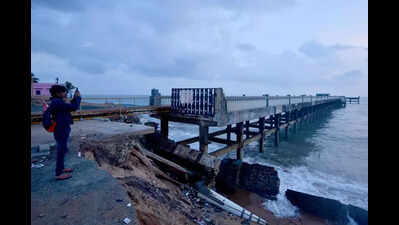- News
- City News
- kochi News
- Coastal vulnerability assessment report highlights Pettah and Muttathara villages
Trending
Coastal vulnerability assessment report highlights Pettah and Muttathara villages
Kochi: Coastal areas are becoming increasingly vulnerable to both natural and human interventions, necessitating systematic vulnerability assessments for effective risk management. A recent study on coastal vulnerability in Thiruvananthapuram district using a Coastal Vulnerability Score (CVS) framework identified Pettah and Muttathara as the most vulnerable areas. This is due to eroding coastlines, high wave energy, failed defence structures and dense population.
In contrast, Cherunniyoor, Varkala and Idava exhibit low vulnerability due to natural coastal defences such as rocky cliffs, stable shorelines, coarser sediment deposition and low exposure to high wave energy, said a study by researchers of National Centre for Coastal Research (NCCR) published in ScienceDirect.
The study developed CVS by integrating physical parameters like open coast (OC), partial damage (PD) and total damage (TD). Vulnerability was assessed using four key parameters — wave energy, sediment characteristics, geomorphology and population density. When they applied this framework to Thiruvananthapuram district, the results showed that Pettah (CVS: 2.63) and Muttathara (CVS: 2.52) were the most vulnerable. In contrast, Cherunniyur (CVS: 1.47), Varkala (CVS: 1.56), and Idava (CVS: 1.58) exhibited low vulnerability.
The coastal vulnerability assessment of 18 coastal villages in Thiruvananthapuram revealed clear spatial patterns of vulnerability. Specifically, Valiyathura and Beemapally beaches experience fine sediment composition and fully disintegrated coastal defences. These regions lack effective coastal protection, making them highly susceptible to extreme weather events and monsoonal wave activity.
End of Article
FOLLOW US ON SOCIAL MEDIA








